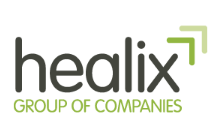Healix, the leading global independent health, travel, and security related risk management solutions provider, has today launched its annual Risk Outlook report, identifying the five major risks to businesses around the world over the next 12 months.
Economic uncertainty and unrest
With domestic measures gradually easing and the return of international travel gathering pace, the shoots of a global economic recovery have begun to emerge. This recovery is not equal, however, and a gap is widening between advanced and developing economies, owing primarily to vaccine inequity and a lack of financial support. Growth rates in poorer countries are behind their Western counterparts, influenced by a lack of testing, inadequate medical capacity and disproportionate death rates. This is creating even more economic disparity.
Anger at responses to the COVID-19 pandemic has added fuel to the fire during unrest in Tunisia, Colombia, Lebanon and South Africa. Knock-on effects such as poverty, unemployment and the removal of subsidies are all potential drivers for unrest which governments are facing in 2022, not least in emerging markets.
Supply chain constraints
Following a dramatic fall during the pandemic, consumer demand is rising, which suppliers and retailers are struggling to meet. Bottlenecks are occurring within supply chains globally, owing to a wide range of factors including a lack of labour to backlogs at ports.
The political fallout of this is significant, with businesses scrambling to fill vacant positions while markets remain sceptical about long-term security, owing to the impact further COVID restrictions could have on the labour market. There are no quick fixes for the issues driving the supply chain backlogs and it is likely that businesses and consumers will continue to feel the impact of this well into 2022.
The rise of ransomware
Last year, hostile actors exploited the opportunities that remote working provided to infiltrate networks. With a huge increase in devices working outside of companies’ perimeter networks, potential avenues of infiltration include phishing attacks and vulnerabilities with remote desktop protocols.
Notwithstanding the immediate disruption a ransomware attack can cause, the long-term impact is significant. Reputational risks are heightened, especially if the news of a ransomware attack becomes public or involves customer data. As criminals continue to create more advanced tools to expose and exploit network vulnerabilities, cyber-attacks remain high on the risk agenda for 2022.
The next pandemic
Before COVID-19, many of the pandemic planning exercises focused on an influenza-like respiratory virus. Two years after the onset of COVID-19, epidemiologists continue to warn of the threat of an influenza epidemic. The pandemic has not eliminated the threat, but sharpened the focus on how to avoid it.
There are currently 26 virus families in existence that are now seen as viable threats to the way we live. Thus, surveillance systems around the world will need to be aware of these potential threats to the world order throughout the next 12 months.
A climate in crisis
Extreme weather is a frequently neglected factor in risk analysis, particularly for developed countries, but the frequency and intensity of such events is only set to increase over the coming decades due to the escalating impacts of climate change.
The gravity of this risk has been reinforced by multiple divergent events throughout 2021, including devastating flash flooding in the Eifel region, which killed more than 200 people, and severe heat waves hitting North West America in June, which caused hundreds of excess deaths, mass disruption and sparked wildfires.
The increasing regularity of such events will pose significant challenges over the coming years and businesses must be prepared to address them.
Chris Job, Director of Risk Management Services at Healix, comments:
“This year, there has been an increase in global travel, particularly for businesses, as face-to-face interactions become preferable following months of virtual meetings. This increase will see familiar risks and challenges re-emerge for organisations in terms of ensuring the health, safety and security of their people and assets, which for the last 18 months have slipped down the agenda.
“As we continue the return to normal, businesses will need to provide more reassurance to their employees and instil confidence that they have the necessary plans and resilience programmes in place to protect their people, assets and operations. Healix’s Risk Outlook report aims to provide businesses with insights into the key risks that could adversely affect them, and in doing so, help them to prepare their business and mitigate consequences where possible.”
Link to the report here
